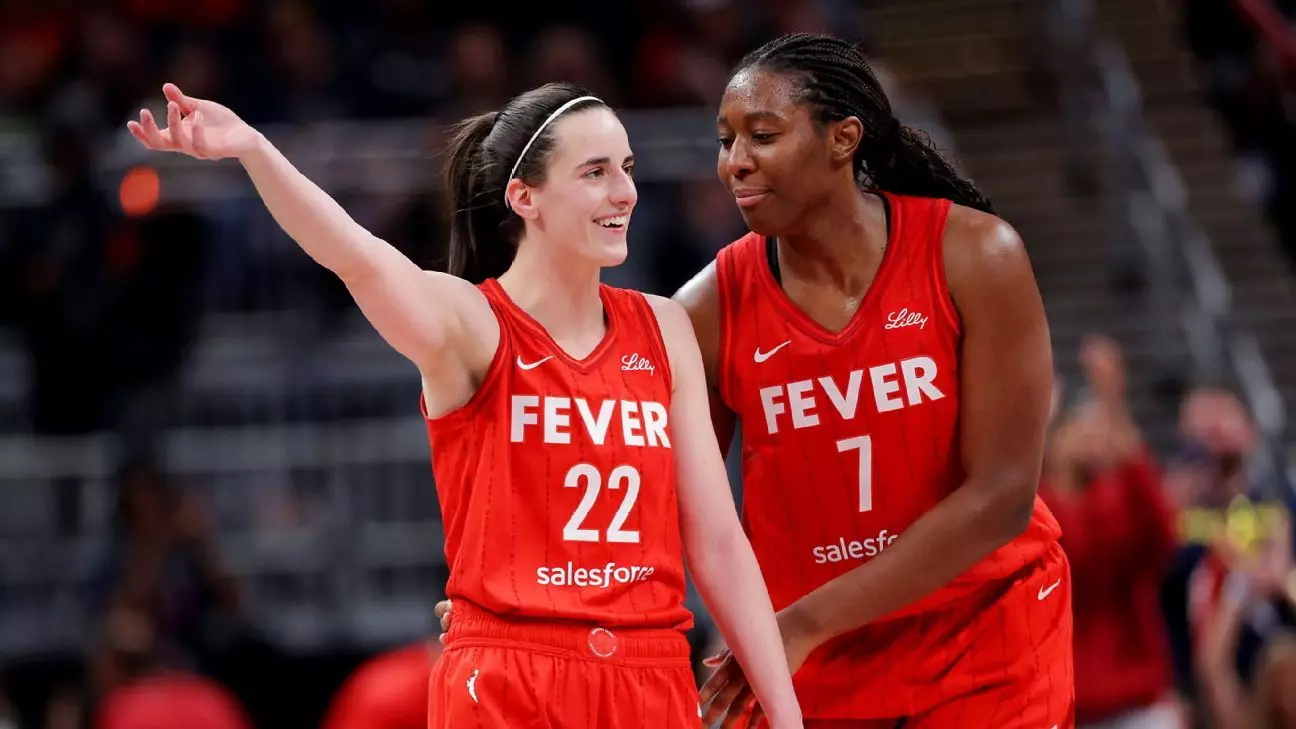This year’s WNBA All-Star Game is set to unfold in Indianapolis, a city that surprisingly took center stage in showcasing the league’s brightest talent. What makes this event uniquely compelling is the overwhelming presence of Indiana Fever players—no fewer than three All-Stars in the same lineup—highlighting a rare moment of regional pride and talent concentration. This isn’t just about individual brilliance; it’s a strategic celebration for the Fever franchise, which fine-tunes its relevance amidst a competitive league. Yet, beneath the surface, it raises critical questions about the integrity of celebrity-driven selections, the influence of coaches, and the partisan dynamics that threaten to overshadow the core spirit of sportsmanship.
From a broader perspective, this convergence underscores the shifting landscape of the league’s talent distribution. The Fever, historically underdogs, now find themselves in the spotlight, more as beneficiaries of clever drafting and star power rather than sheer competitive dominance. Their inclusion spotlights the need for the league to balance talent across teams—because when such concentrated star power appears, it risks creating an imbalance that could affect the event’s perceived fairness, and consequently, its appeal to a diverse fan base.
The Complex Dynamics of Captain Selections and Drafting Strategy
The process of selecting captains Caitlin Clark and Napheesa Collier encapsulates both the strategic and political nuances of modern sports. Their initial dominance in fan voting gave them significant leverage, but the real game unfolded during their team drafts. The players they selected reflect varying priorities—ranging from proven performance to personal connections.
What’s striking is the manipulation of coaching assignments—an action that exposes the underlying politics rather than pure meritocracy. The decision to switch coaches from Cheryl Reeve to Sandy Brondello, rooted in the desire to facilitate certain player combinations, reveals how coaching can be used as a political tool rather than being solely about tactical strategy. Such maneuvers underscore a troubling tendency: influence, favoritism, and strategic partnerships often shape outcomes far more than merit or genuine team fit.
Assigning Reeve, Collier’s coach, to one team just because her player is the league’s top vote-getter, and then swapping coaches to match locker-room loyalties, signals a blurred line between management decisions and personal allegiances. This undermines the objective spirit that should ideally govern all-star selections, turning a celebration of excellence into a chessboard of alliances.
Potential Fragmentation Through Player Trades and Teammate Dynamics
The draft exhibited fascinating tensions around player trades, with offers and counteroffers revealing both camaraderie and vested interests. Clark’s initial offer to trade Satou Sabally for Breanna Stewart was more than a negotiation; it was a subtle statement about team balance and strategic chemistry. Collier’s counteroffer, asking Clark to include Aliyah Boston, placed further emphasis on loyalty and familiarity, hinting at underlying clubhouse politics.
Such trade negotiations are fraught with implications. Are they driven purely by team chemistry and strategic compatibility? Or are they influenced by personal loyalties, regional loyalty, and power plays? The fact that the players’ trade prospects remained unconsummated demonstrates a certain respect for the integrity of the event, yet the negotiations expose the fragility of true objectivity in a league where personal and political considerations often influence decisions.
By actively debating trades—beyond the realm of pure skill—these athletes mirror the fragility of integrity in sporting institutions. When trades are mere clout-chasing or ego-driven maneuvers, it dilutes the competitive essence and muddies the purpose of showcasing the league’s best players. The subtle tension between collaboration and rivalry within these negotiations mirrors broader societal tensions—trust, loyalty, and the drive for individual recognition versus collective achievement.
The Spectacle versus the Authenticity of the All-Star Event
Lastly, the upcoming skills competitions and the main event itself at Gainbridge Fieldhouse promise to be thrilling spectacles. Yet, the focus must transcend glitter and fame—embracing the question of whether this All-Star iteration truly celebrates the league’s meritocracy or merely serves as a stage for political theatrics and alliances.
The event’s scheduling, hosted at the Fever’s home court, is emblematic of the league’s attempt to spotlight local talent and boost regional engagement. But it also raises concerns about the commercialization of what should be a pure celebration of athletic excellence. When fan votes and draft strategies intertwine with personal favoritism, the authenticity of the event comes into question. Is this celebration of basketball, or a referendum on the league’s ability to maintain integrity amidst internal politics?
As fans and critics, we can’t ignore that these proceedings are as much about narrative-building and power plays as they are about celebrating individual excellence. The challenge lies in resisting the exacerbation of divisions and recognizing the potential for these moments to serve as a catalyst for meaningful change—ensuring talent is celebrated fairly, coaching decisions are transparent, and athlete relationships are rooted in genuine respect rather than strategic manipulation.


Leave a Reply